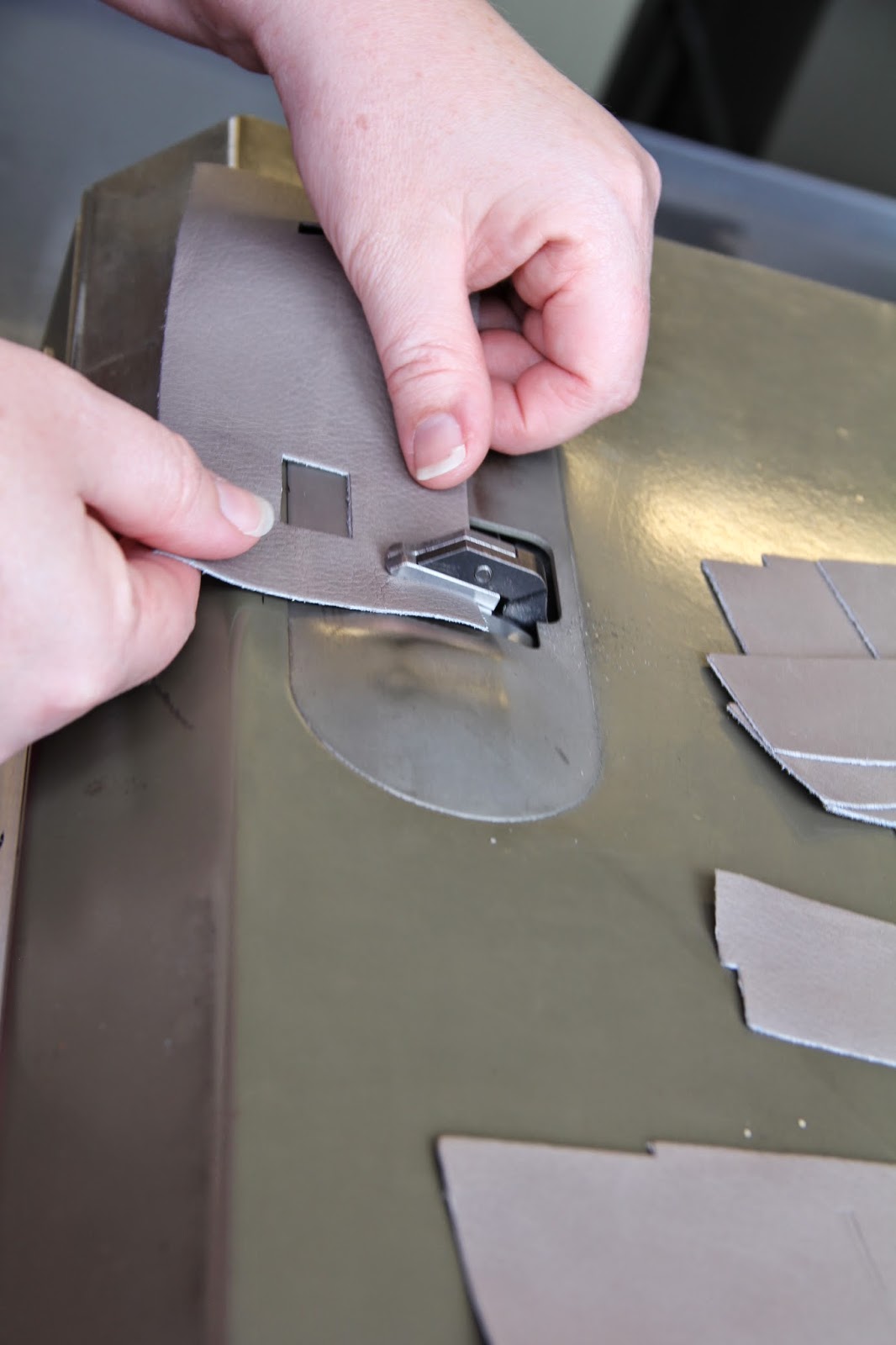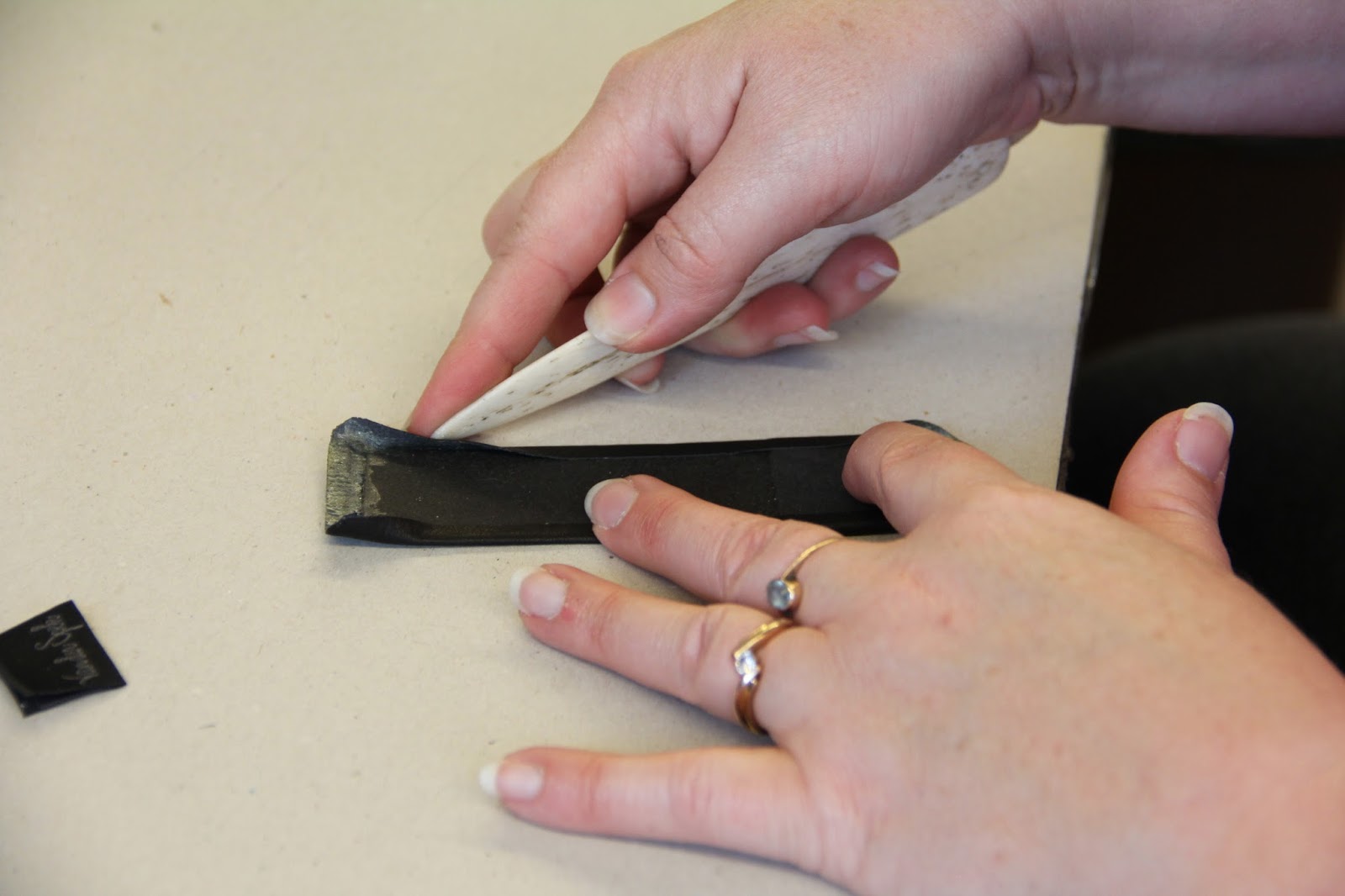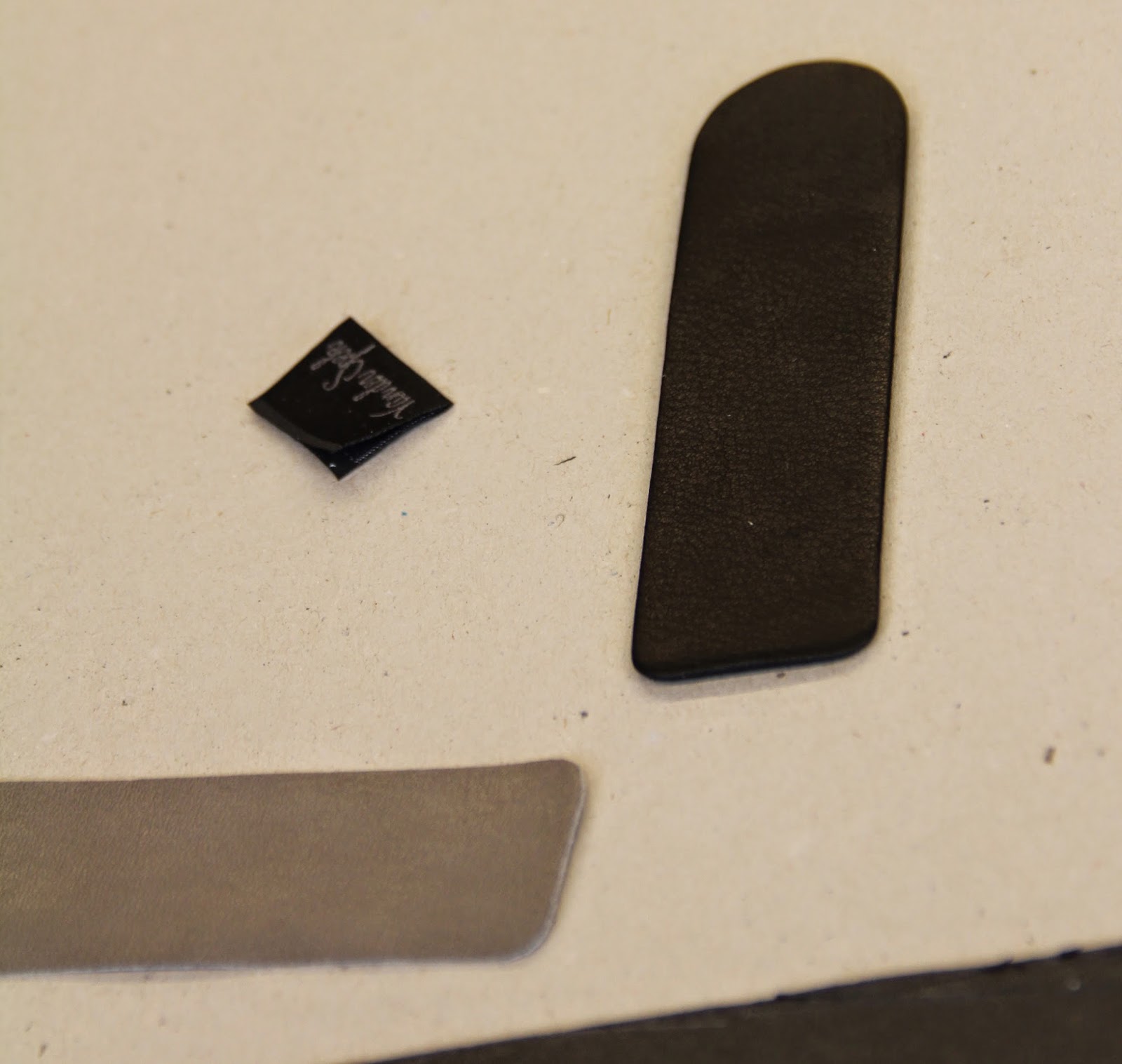Petra was very willing to co-operate and took over 700 photographs of two organisers being made.... ok so these have been filtered down to about 120 and we have split them in two to show you how they are assembled in great detail.
So thank you to Petra Van der Spek for sharing the following photos of their full manufacturing process of their Standard size (Personal) organiser. We will be bringing you the photos of an A5 Van der Spek organiser next week.
Today we are looking at a Van der Spek 'Standard' organiser which is the same page size as Filofax Personal or Gillio medium size.
It is a made with nappa leather, which is very soft and supple with a soft sheen finish. This one is Nero (6235) on the outside and Acacia (6204) on the inside, so you should be able to see easily as the organiser is assembled the two halves coming together.
The stitching is contrasting so you will see grey stitching on the outside and black stitching on the inside.
So we start with the selection of the hide and the parts have been cut out. Some parts are cut by hand, some of the more complicated parts are cut with a metal press cutter.
 |
| The organiser parts. |
 |
| Making the credit card compartments. |
 |
| Checking the work as we go. |
 |
| Making the edges of the leather slightly thinner. |
 |
| Making the edges thinner on a machine. |
 |
| Applying glue to the back of the leather. |
 |
| Spreading the glue evenly. |
 |
| Placing the stiffener board on to the leather. |
 |
| Fixing the leather to the liner. |
 |
| Gluing the edge of the leather prior to being folded over. |
 |
| Folding the edge over on to the glued edge. |
 |
| The two inside sections ready for the next stage. |
 |
| Folding of the credit card pocket linings. |
 |
| Gluing each one to the back of the leather. |
 |
| Assembling the credit card section. |
 |
| Finished credit card section. |
 |
| Using a folding machine to fold the edge of the leather. |
 |
| Edge folded. |
 |
| The component parts at this stage laid out. |
 |
| Adding glue to the inside edge. |
 |
| Gluing the inside of the spine section to join the two inside covers together. |
 |
| Done! |
 |
| Trimming the inside lining by hand. |
 |
| Adding the liner to the lower front inside pocket. |
 |
| Applying glue to the edge where the front inside lower pocket will be located. |
 |
| Placing the pocket in place. |
 |
| Adding glue to the edge of the closure leather. |
 |
| Folding over the edges of the leather on to the glue on the closure strap. |
 |
| Tamping it down with a hammer! |
 |
| Using a 'Bodkin' to pierce the leather in the corner. |
 |
| And the same operation in the other corner of the closure. |
 |
| The two parts of the closure strap. |
 |
| Fixing one half to the inside of the closure leather strap. |
 |
| The press makes sure it is held securely in place. |
 |
| Popper in place ready to be joined to the outside piece. |
 |
| Placing the inside leather strip on the back of the outer closure made earlier. |
 |
| Gluing the VdS tag under the edge of the slot pocket. |
 |
| Sewing the two halves of the closure together with the contrasting stitching |
 |
| Making the elasticated pen loop in grey leather. |
 |
| Sewing the joins of the inside covers. |
 |
| Bringing together the various parts that have been stitched to check for sizing. |
 |
| The components for the front inside cover as well as the pen loop. |
 |
| Assembling the rear inside cover which also has a pocket at the base of it. |
 |
| The inside components more or less complete together with the closure strap. |
 |
| The closure strap is glued to the outside leather to hold it in place before it is stitched. |
 |
| The outside leather and the inside leather and rings prior to assembly. |
 |
| Gluing the edges of the foam liner. |
 |
| Placing the foam in place. |
 |
| Applying glue to the ring mechanism back plate. |
 |
| Putting the ring back plate in place. |
 |
| Pressing down the leather in to the curve of the back plate from the inside. |
 |
| Checking the foam is the correct size against the inside of the organiser. |
 |
| Pressing the other half of the press stud on to the front cover. |
 |
| Before the outside leather is folded around the edges over on to the inside. |
 |
| Edges folded over in preparation for stitching. |
 |
| The closure strap has been stitched on to the outside cover and now the edging is stitched. |
 |
| This joins together the two halves of the organiser and after some checks it is finished. |
All ready for a very happy customer.
And if you too would like a customised Van der Spek organiser made for you, you can find out more details on their website and also in the fans Facebook group.
Again thank you to Petra for all of the photographs.
Coming up tomorrow a review of this particular organiser.



I love this article!! Thank you steve and petra. And the lady who put them together. Each van der spek planner is handmade?
ReplyDeleteAll the custom organizers are handmade I believe. :)
DeleteThis post was very interesting. I love my VDS so much more now that I've seen how much work was put into it. Thanks, Steve and thank you Petra and the Van der Spek family/team.
ReplyDeleteRight, so it's a piece of cake then to make one ;-) (I WON'T be trying any day soon!). Great article.
ReplyDeleteBeautiful! Great post.
ReplyDeleteThey must be a whizz at doing jigsaw puzzles then! A very interesting article, especially as I'm still intent on making my own. Though I'm ashamed to say that it won't be anywhere near this quality or complexity
ReplyDeleteThat was fascinating! Thank you to Steve, Petra, and the VDS assembly lady for this post!
ReplyDeleteThanks for a fascinating post! It would be interesting to find out how Filofaxes are made nowadays in comparison.
ReplyDeleteGood idea, that would be v interesting!
DeleteThanks for great post, Steve!
So many steps and such care. It must take ages to train up to make these, and so much patience. Well done VDS Team!! xx
ReplyDeleteThat is wonderful! Such skill!
ReplyDeleteWow, what a fascinating post! The finished binder is immaculate, whereas I only have to look at mine to produce scratches. Thanks for this insight into the skill and craftsmanship involved :-)
ReplyDeleteWow! I always knew it was a complicated process, but actually SEEING it is another thing entirely. What an amazing process!
ReplyDeleteWow truly appreciate man made and great photos. Love the look of the finished product. Love the posting.
ReplyDeleteWhat a fascinating post! Seeing it all in pictures really makes all that hard work shine, and when mine arrive I will appreciate them all the more knowing that someone put such skill and love into making them as opposed to just shunting some leather through a machine. Besides, I've never come across such fantastic interaction between a company and customers. So who will be using this beauty?
ReplyDeleteOh, how fascinating! It's clear just how much work and care goes into making these binders. Amazing to see in photos!
ReplyDeleteThat is fantastic to see - I would so love to go there and have a go at making my own (very badly), and getting them to make me one that I could actually use so that the one I made could just be a source of amusement :-)
ReplyDelete